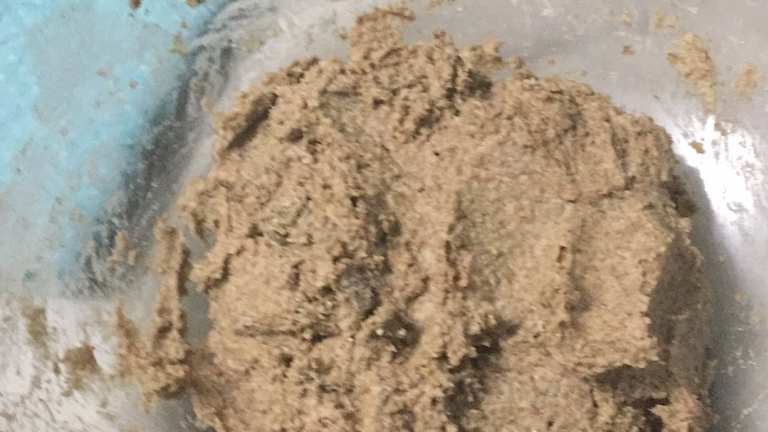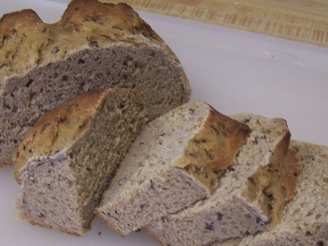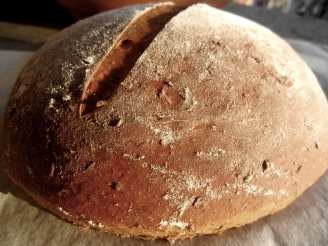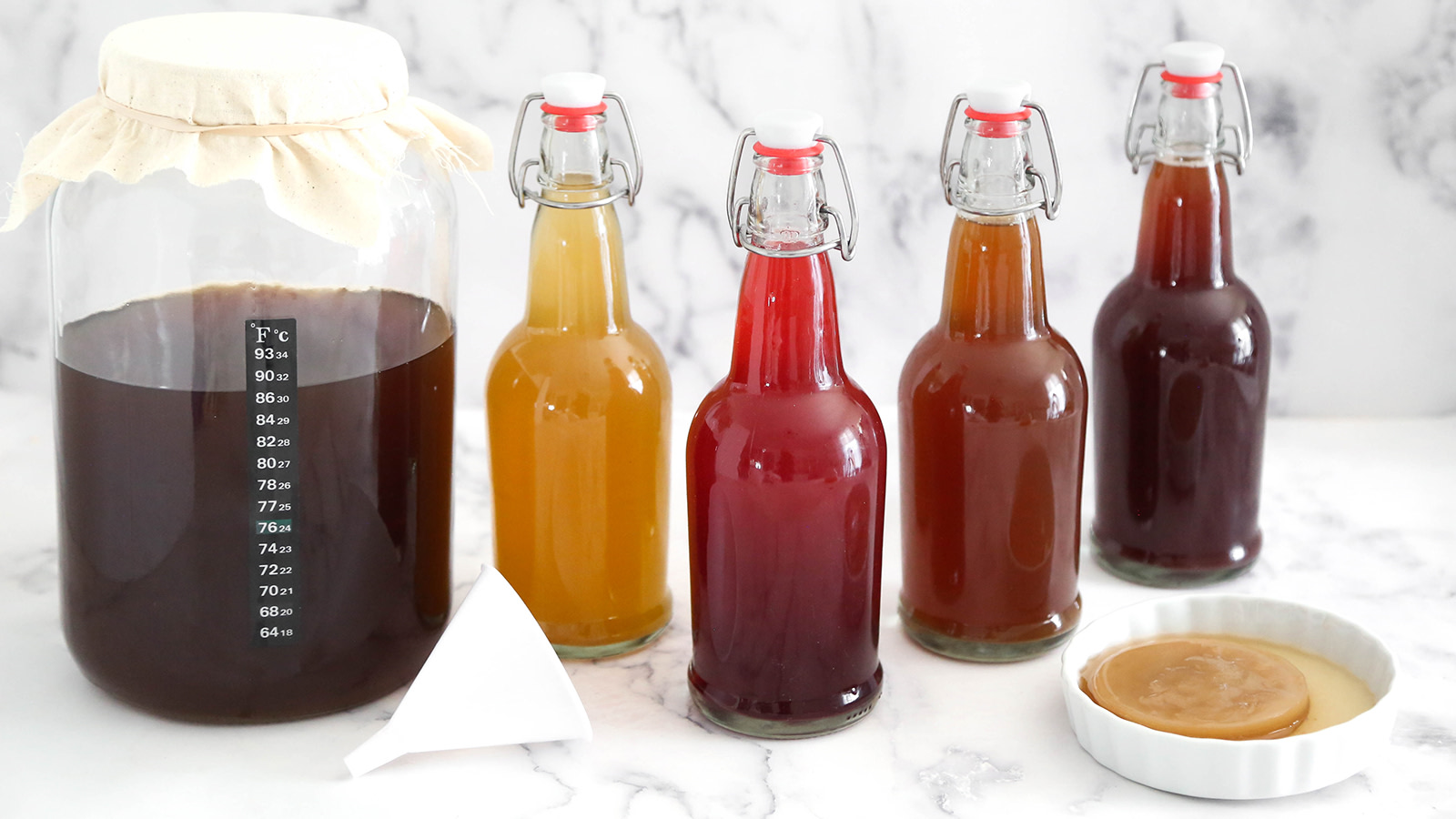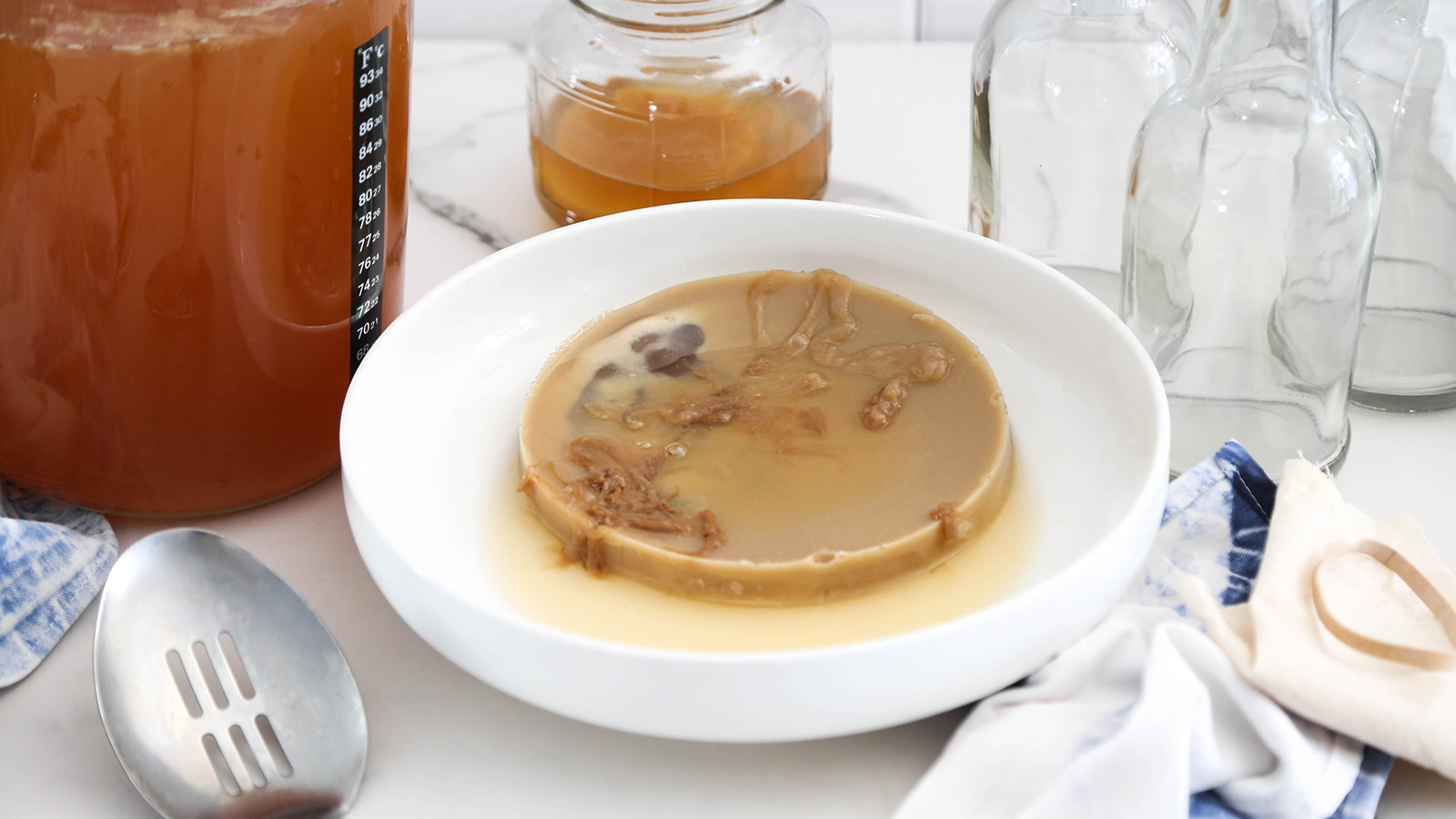Sourdough Pumpernickel
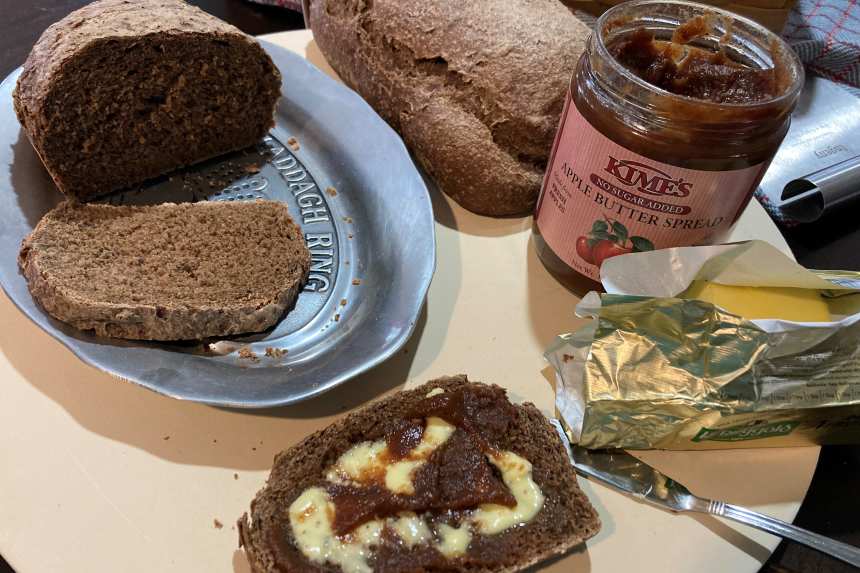
photo by lucytascone

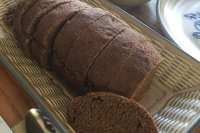
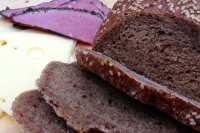
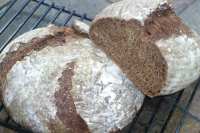
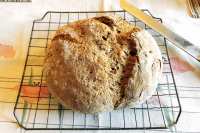
- Ready In:
- 1hr 5mins
- Ingredients:
- 9
- Yields:
-
2 loaves
- Serves:
- 28
ingredients
-
sponge
- 1 cup sourdough starter (133 gm flour, 133 gm water)
- 1 1⁄3 cups black coffee (room temperature, 298 gm)
- 2 cups stone ground rye flour (261 gm)
-
Dough
- 2 teaspoons salt (table, 14 gms)
- 1⁄4 cup molasses (57 gm)
- 2 tablespoons cocoa powder
- 1 cup whole wheat flour (131 gm)
- 2 cups bread flour (267 gm)
- 1⁄2 cup water (scant 1/2 cup, luke warm, 105 gm)
directions
- Using a proofed 100% hydrated starter, make the sponge in a large bowl.
- Cover and let sit on counter for 5 to 12 hours at room temperature. Longer times means a more sour bread.
- Add the dough ingredients to the sponge and mix well.
- Cover and rest for 20 minutes.
- Knead by hand for about 5 minutes adding water or flour to keep the dough tacky, not sticky (not actually coming off on your hands).
- Place in a bowl that has been sprayed with oil and cover to let rise. I have a spot that averages 80 F for this and it's ideal.
- Stretch and fold every 40 minutes and return to rising, covered.
- When 1.5 times it's original volume, (2 to 3 hours depending on temperature) divide and form 2 loaves (freeform or 8 x 4 pans). If freeform, use a rising baskedt or a floured, cloth covered colander.
- Rest for 1 hour 30 minutes at 80 F or until it increased in size by 1.5 times.
- Preheat oven and a pan on the bottom of the oven for water to generate steam. As loaves are placed in the oven, add 2/3 cup of hot water to the pan.
- I invert the loaves onto parchment, score and set on a baking stone, but a sheet pan can be used.
- Bake at 375 for about 50 minutes until 205 F internal temperature. I rotate the loaves after 15 minutes and remove the steam pan at that time.
- cool on racks.
Questions & Replies
-
This seems like just the recipe I’m looking for. There are very few pumpernickel style sourdough bread recipes on line...I was wondering if anyone tried making pumpernickel bagels with this recipe? I know a bagel dough is a little stiffer than this might be, so I’m going to take a portion of the dough and see if I can tweet it to make a few bagels. I just mixed up the sponge and will see how it goes tomorrow.
-
Hi All, This is a slightly different process than how I've been making other types of sourdough so I have a couple of questions. 1) I would like to add dried sour cherries and pecans to this recipe. At what step would I add them? 2) I usually bake my sourdough breads at a much higher temperature. Why is this lower? Because of the molasses? the rye? Still learning! And 3) in the photos in the comments there seems to be quite a range in the coloring. Why would that be? I know that is a harder question to answer. Thanks in advance for your attention.
Reviews
-
It's a farce, not pumpernickel. Real pumpernickel consists only of rye – rough flour, meal or even whole, unbrocken grains, water, rye sourdough as a leaven, salt, sometimes rye malt, and usually some part of the old pumpernickel. It's backed in the low temperature in closed pans for 16-24 hours. It is a very special kind of traditional bread, of German, exactly Westfalian, origin and in Europe the name is reserved by European Commission for such a bread.
-
This was a great recipe! I halved it and made a smaller round loaf. It was very flavorful, had a great texture and color. Some people said this was too bitter but we did not find that to be the case at all. The sourdough starter along with the cocoa and coffee give it a robust flavor and we have enjoyed dipping the bread in olive oil dips with rosemary and garlic, having it with cheese, and making sandwiches with it. Thanks for the recipe!
-
-
Thanks for the recipe. Very delicious by itself or my favorite is with a thin slice of cotija cheese and prosciutto. I'm new to bread and sourdough baking and have really good results when I use the recipes that start with a batter type sponge. I might use less strong coffee next time as I brew with a mocha pot.
-
see 9 more reviews
Tweaks
-
This is a GREAT recipe! My starter must have been wetter than yours as I found myself kneading in more and more bread flour. I use the KAF sourdough starter and have turned one batch into rye. I used 1/2 cup rye flour along with the bread flour; I used the KAF pumpernickel instead of whole wheat and added 1/2 cup raisins and 2 T caraway seeds. (Those of us who have made bread for years can't leave well enough alone can we?) I couldn't believe how well the dough raised! Have never read about your method of rising for 40 minutes then stretching and folding, but I followed those directions and it works very well - am interested in the reasoning behind this ---<br/>I turned my oven down halfway through as it was going too quickly, but that's a small adjustment. Took notes all the way through and can't wait to make it again!! Thank you.
RECIPE SUBMITTED BY
Red_Apple_Guy
Newnan, Georgia
My wife and I live just outside of Atlanta, GA. Two daughters live in town, one with my two grandsons. My son is living in California. I'm a retired environmental manager at a manufacturing facility.
My Mom and Dad would have loved this site. Dad was a huge collector of recipes and was in the food industry. Mom was a terrific cook as well. Another influence was a roommate at the Universtiy of Arkansas that was an excellent cook.
Today I enjoy barbecuing and grilling year round and cooking in general. My latest adventure is in bread baking. I'm loving it and going to school on it right here on the bread forum. I'm active in a terrific church and also love fly fishing and fly tying.





